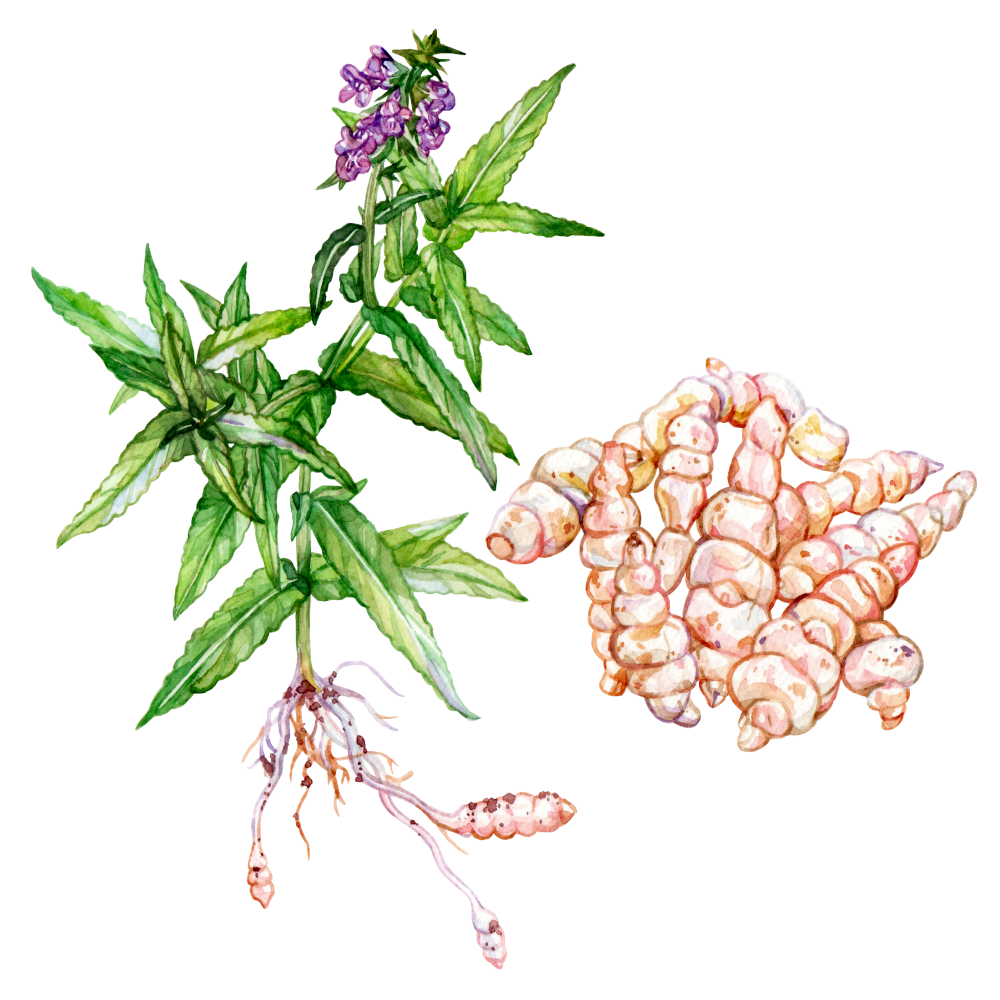Crosne

Latin name: Stachys affinis, S. sieboldii
Other names: Chinese artichoke, Japanese artichoke, artichoke betony
Uses: root vegetable
What are crosnes?
Crosnes (pronounced “crone”) are the small, bulbous rhizomes of a perennial plant in the mint family. Yes, they look like grubs and are very difficult to source, but don’t let that put you off.
Why are crosnes healthy?
Crosnes are excellent sources of fiber, both soluble and insoluble, and several important minerals like calcium, phosphorus, and potassium. In traditional Chinese medicine, crosnes are used as a cold remedy and revered as a symbol of longevity.
What do crosnes taste like?
Crosnes have a nutty-sweet flavor and crisp-crunchy texture similar to jicama, sunchoke (Jerusalem artichoke), or a water chestnut. It does have a slightly artichoke-y flavor, as its alternate names suggest.
How do I use crosnes?
First, wash them well (rubbing with salt helps reach dirt in the crevices) but don’t worry about peeling them — imagine the hassle! You can cook them, but crosne are also lovely raw and pickled or fermented. In Japan, pickled crosne (chorogi) are dyed red with purple shiso as a traditional New Year food. If you do cook crosne, it’s best to simply blanch them (boil for 2 minutes then shock in ice water) and add them to stir-fries and sautés at the end of cooking to maintain their crisp texture.
What do crosnes pair well with?
Crosnes taste best when treated simply; they love butter and being confited in olive oil with thyme and garlic. They’re also wonderful with other fall foods like winter squash and other root vegetables.
Where do crosnes grow?
Crosnes have been cultivated in central and northern China since the 13th century and were introduced to Crosne, France, in the 1880s. If you want a reliable supply of the hard-to-find tubers, you’ll probably have to grow your own. Luckily, you can just plant a few in a garden bed or pot in the spring, and after a year you’ll never be rid of them.
How to buy crosnes:
Look for them in Asian groceries and farmers’ markets in late fall. Select firm specimens with no black or mushy spots, then store them in a paper bag in your refrigerator’s crisper drawer where they’ll keep for months.
Fun crosne fact:
Chinese names for crosne (the primary of which is manluzi) vary, but many point to the tuber’s creepy-crawly appearance, translating to “grass silkworm,” “ground silkworm,” and “dry snail.”




